This story from the Australian Aviation archives is from September 2011, when Geoffrey Thomas wrote about the collapse of Ansett Australia 10 years after the airline was placed into administration on September 12 2001 and eventually folded.
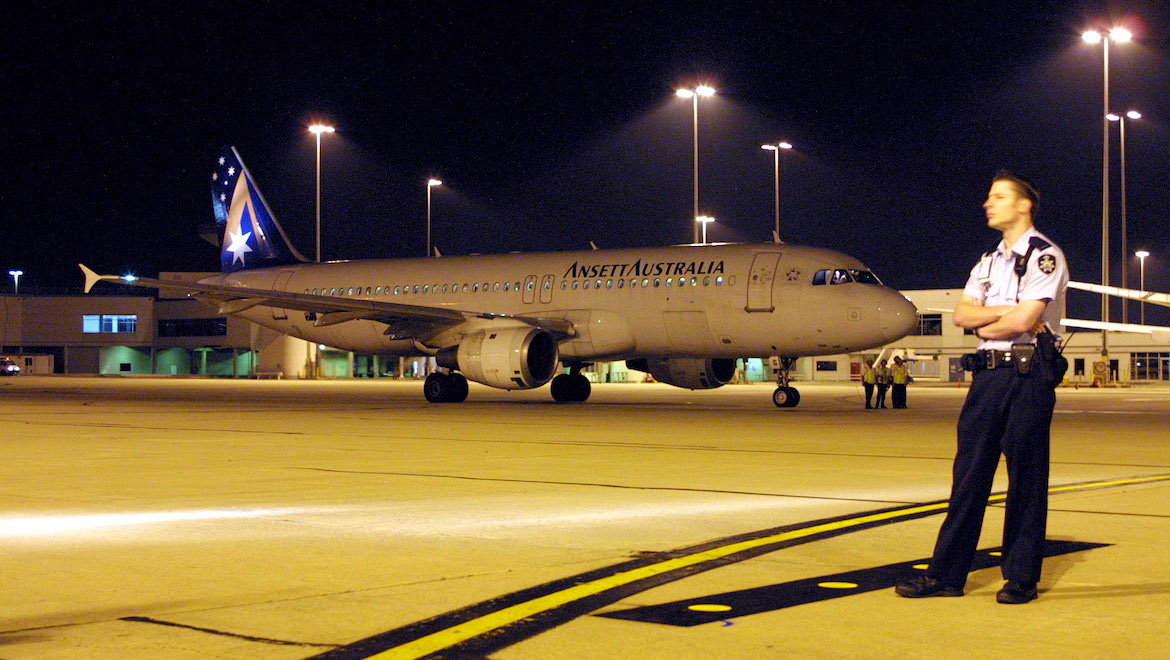
As with an aircraft accident, the crash of Ansett 10 years ago this month was not caused by one factor but a conspiracy of many, that in the end created an industry worst practice airline operating in one of the world’s most liberal airline markets.
Its staff were amongst the highest paid, unions were inflexible, its board and management were divisive and its fleet was a shambles.
While its staff were passionate, professional and loyal, they were sadly victim to the perfect storm that awaited them thanks to muddled government policies and decisions and management blunders that stretched back 20 years.
The result of that perfect storm was the biggest corporate shutdown and layoff in Australia’s history, with 16,500 staff losing their jobs, the biggest corporate write-off in New Zealand’s history, and a blame game that will go on for decades.
Ansett’s unsecured creditors amounted to $3 billion and they got nothing, although staff were eventually paid most of their entitlements.
The story of the Singapore Airlines-Air New Zealand-Ansett fiasco is also the story of the collision between airline deregulation and liberalisation on the one hand, and the national need for a healthy and vibrant airline system on the other.
The seeds of the demise of Ansett started decades earlier when the airline was laden down with excess baggage by its then chairman, the late Sir Peter Abeles, who thought deregulation was a new brand of champagne. As the chill winds of airline deregulation ravaged the US, Abeles was saddling Ansett with 37 companies – many, such as one that made golf carts and another which built lecterns, totally unrelated to aviation.
There is little doubt that Abeles’s passion to turn Ansett into the world’s best domestic airline sowed the seeds for the airline’s demise. Instead of a streamlined operation Abeles ordered many duplicate types such as 737s and A320s, while many aircraft such as the Fokker 50 and A320 were purchased without any business plan of note.
The order for the A320s was done without consultation with his 50 per cent partner Rupert Murdoch, according to one News Corp executive. According to the executive, Murdoch stormed into a board meeting slamming a copy of The Australian on the table saying “look what bloody Abeles has done now”.
In shades of Howard Hughes’s bid to have gold anodising on his fleet of Convair 880 jets for TWA, Airbus executives recount that Abeles wanted to have gold plated ashtrays in the first class section of the A320s, but was talked out of it by the manufacturer. Nonetheless, the A320’s décor was magnificent, with deep buttoned plush royal blue velvet and woodgrain panelling.
However, the problem for the airline was that this bent on luxury was sending all the wrong messages to staff and creating a culture that was out of step with the reality of domestic airlines.
Abeles had a free hand with Ansett, with Murdoch far more involved in developing his media and broadcasting businesses in the US and elsewhere. Thus the airline was a neglected stepchild just at the point when it most needed parental attention. Abeles was eventually forced out in 1994.
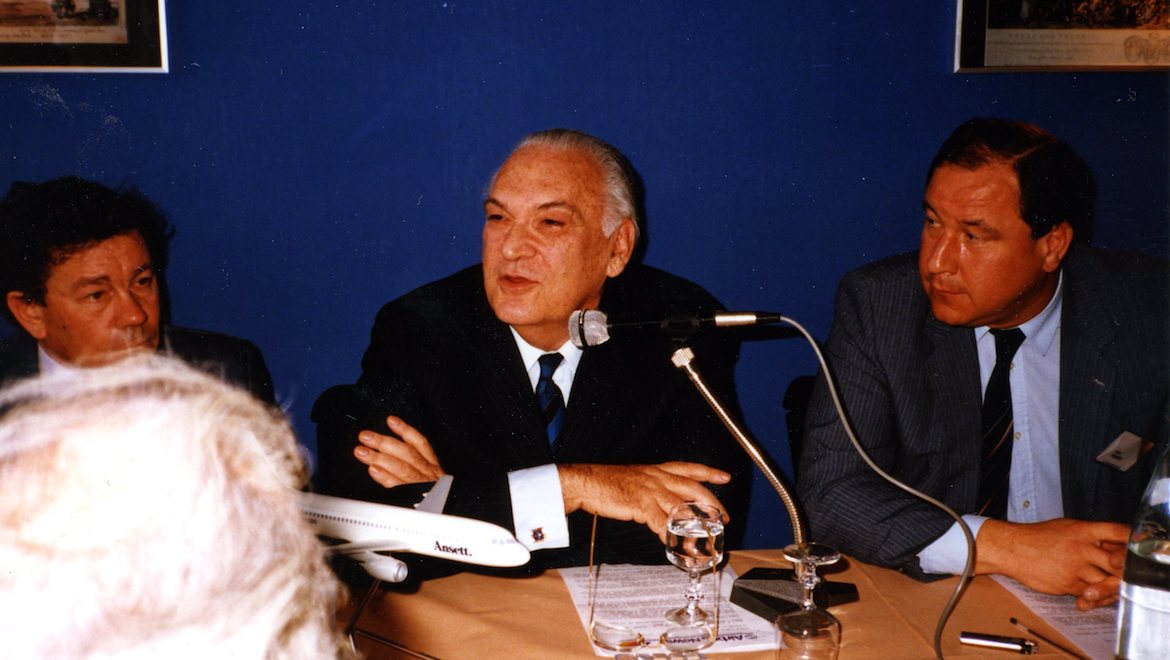
Deregulation and a backflip
Deregulation started in late 1990 and its first casualty, Compass Airlines, collapsed in December 1991. It took the collapse of Compass Mk II during 1992 to send the Australian government reeling, and resulted in the infamous one-nation Single Aviation Market commitment which included the right for Air New Zealand to operate domestic operations in Australia.
Arguably the seeds of Ansett’s eventual demise were sown in the Australian government’s decision to also merge government owned Australian Airlines and Qantas. Overnight, Qantas, which had not been permitted to fly within Australia, gained a fully developed domestic system. Ansett, which was given permission to fly international routes, was forced to build its own international system from scratch, a handicap it never overcame.
The first stage of the new agreement – beyond rights – came into effect on November 7 that year, and Air New Zealand began services to Taipei via Brisbane, and also services to Bangkok via Brisbane.
However in October 1994, the Australian government, under pressure from its airlines, reneged on its earlier agreement to allow Air New Zealand to fly domestic routes in Australia under the Single Aviation Market, but gave the airline the right to buy into an Australian airline.
Ansett and Qantas had found out that Air New Zealand planned to launch a low-cost airline, Pacific Star, in Australia, which would have devastated their legacy operations that were still out of touch with the low-cost deregulated trend sweeping the world.
In November 1994 Air New Zealand announced that it would seek a stake in Ansett as its entry strategy into the Australian market. On its home market, Air New Zealand acquired the balance of the 50 per cent it did not own in Air New Zealand Link operator Air Nelson and launched Freedom Air International, a Mount Cook Group subsidiary, operating low-cost charter flights between New Zealand and Australia using a Boeing 757.
On September 2 1996 Air New Zealand entered into an agreement to acquire 50 per cent of the Ansett Holdings Limited Group from TNT for a total investment of $475 million, providing Air New Zealand a stake in the Australasian aviation market.
At the same time, Air New Zealand increased its asset base by raising about $240 million through a pro rata offer of ordinary shares. In addition, the New Zealand government agreed to raise the proportion of B shares which could be held overseas from 35 to 49 per cent of total issued capital.
In January 1997, News Limited, a subsidiary of News Corp appointed Sir Rod Eddington, then chief executive of Cathay Pacific Airways, chairman and chief executive of Ansett Australia.
With Eddington on board and Air New Zealand a 50 per cent owner, things moved rapidly. Qantas quit its stake in Air New Zealand which was completed in May 1997, and in June, Air New Zealand, Ansett Australia, Ansett International and Singapore Airlines inked a commercial alliance, while Air New Zealand secured the balance of 50 per cent of Melbourne based Jetset Travel.
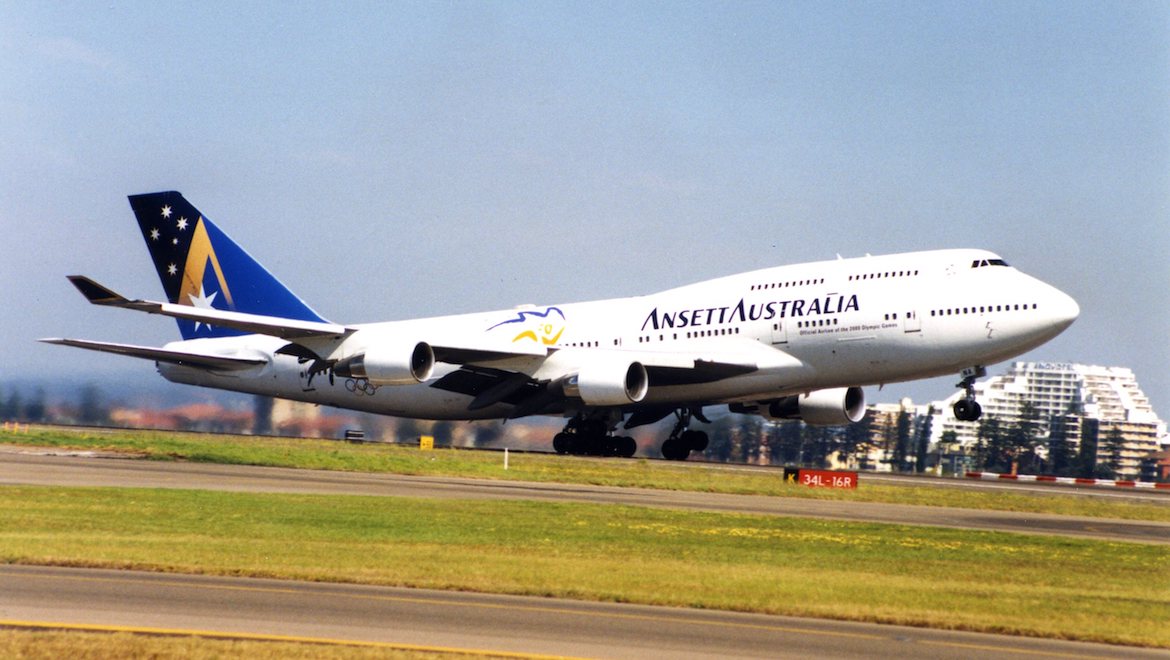
Lousy business
On May 15 1998 Air New Zealand, Ansett Australia and Ansett International announced that they would join the Star Alliance from March 1999. On the surface everything looked rosy, although Eddington’s candid but prophetic opinion of Ansett in early 1998 that it was “a great airline but lousy business” was a portent of things to come.
In the same context Eddington, when asked by Australian Aviation at the same time “why Ansett couldn’t set up a low-cost airline”, replied that the airline’s unions “would never agree.”
In fact Ansett had “several opportunities” to harness a low-cost operation when it took over East-West Airlines in the 1980s, and in the 1990s with Skywest in WA which wanted to operate ex-Ansett Fokker F28-4000s to tap the fly-in/fly-out (FIFO) market.
Two expert airline chiefs, Bill Meeke at East-West Airlines and Bob Mason at Skywest, told Australian Aviation of their frustrations at trying to convince the Ansett board of the need to tap the low-cost and FIFO markets.
In 1998 Eddington immediately saw that Ansett’s fleet needed a shot in the arm and placed options for seven 767-300s. But Air New Zealand baulked at the commitment – in large part, according to analysts, because its own controlling shareholder, Brierley Investments (BIL), was allegedly having financial problems.
Other problems surfaced. Eddington and Air New Zealand managing director Jim McCrea wanted to integrate the two airlines but the staff did not, and the cultural collision was not simply a matter of industrial rivals battling for the upper hand in the corporate equivalent of an arranged marriage.
At the heart of the dispute was the rivalry between Australia and New Zealand, despite their common heritage. A large part of that distrust was the result of Australia’s treatment of TEAL when it was a shareholder, and later Air New Zealand over the decades.
The cultural clash quickly came to the fore as the two chief executives strove for operational and marketing efficiencies. For example, Air New Zealand blocked Eddington’s push for Ansett International to replace the airline on the Sydney-Los Angeles route, despite the fact that Ansett domestic passengers were flying Qantas internationally.
The two airlines even argued over whose name would head the new Star Alliance lounge at Sydney Airport. Those problems meant that planned cost savings from synergies were way behind. Despite these problems, within two years Eddington had Ansett in profit and in an alliance with SIA, an early member of Star. And against the odds, Ansett also was developing an international presence.
Now, however, a new challenge arose. News Corp was eager to follow TNT out of the airline business and put its 50 per cent stake on the block. As a condition of its agreeing to buy out TNT, Air New Zealand had received a right of first refusal on the News Corp stake. Eddington believed that Air New Zealand, because of its majority BIL shareholding, did not have the balance sheet strength to buy Ansett and so approached SIA, which twice before had tried to secure stakes in Australian airlines – Ansett in 1991 and Qantas in 1994.
SIA was, however, aware of the deep cultural mistrust between Air New Zealand and Ansett when it entered the scene. SIA sought advice from its banker ABN-Amro on Air New Zealand’s ability to exercise the pre-emptive right to News Corp’s holding. The advice was the same as Eddington’s – ANZ would never attempt to buy the shares. So SIA made its bold play for 50 per cent of Ansett in early 1999 and Eddington agreed to stay on for another two years.
Jewel in the crown?
Then SIA chief executive Cheong Choong Kong was delighted. He had Australian government approval and he had access to Ansett International, which had enormous growth prospects. “It is the jewel in the Ansett crown,” he said at the time.
Backed by SIA’s enormous resources, Ansett International could expand quickly to rival Qantas. But Brierley had also grown tired of its investment in Air New Zealand, which now stood at 57 per cent, and was looking for a way out. Brierley controlled the Air New Zealand board and was eager to bring SIA into that airline and reduce its stake at the same time.
And there was also New Zealand’s fierce national pride. “The Kiwis thought SIA and Ansett were conspiring to cut them out,” said one Ansett executive. So the die was cast and Air New Zealand, against Eddington’s own prediction, made a bid for the remaining 50 per cent of Ansett, blocking SIA.
The Australian Foreign Investment Review Board could have deemed the deal not in the national interest. After all, Brierley was known to be having financial difficulties, having taken significant write offs. SIA clearly was the better capitalised investor. Additionally, although it controlled Air New Zealand, Brierley itself now was controlled by Malaysian interests. The company, while founded in New Zealand, was domiciled in Singapore and registered in Bermuda. But the Australian government did nothing, and thus the outcome was much as Brierley wanted.
Air New Zealand took News Corp’s share in Ansett, and SIA was forced to pursue a back door route by taking a large slab of Brierley’s stake in Air New Zealand. Arguably, the outcome satisfied no-one. SIA ended up in partnership with the company that had blocked its bid for Ansett. Because of the bidding war with SIA, Air New Zealand paid top dollar for Ansett at a time when the carrier was in need of significant new investment, and right at the point when two cut-price new entrants, Virgin Blue and Impulse, were set to challenge the domestic duopoly.
At the time Jeanette Ward, airline analyst at global ratings agency Standard & Poor’s, said that it “defied belief that they [Air New Zealand] didn’t know what they were buying.”
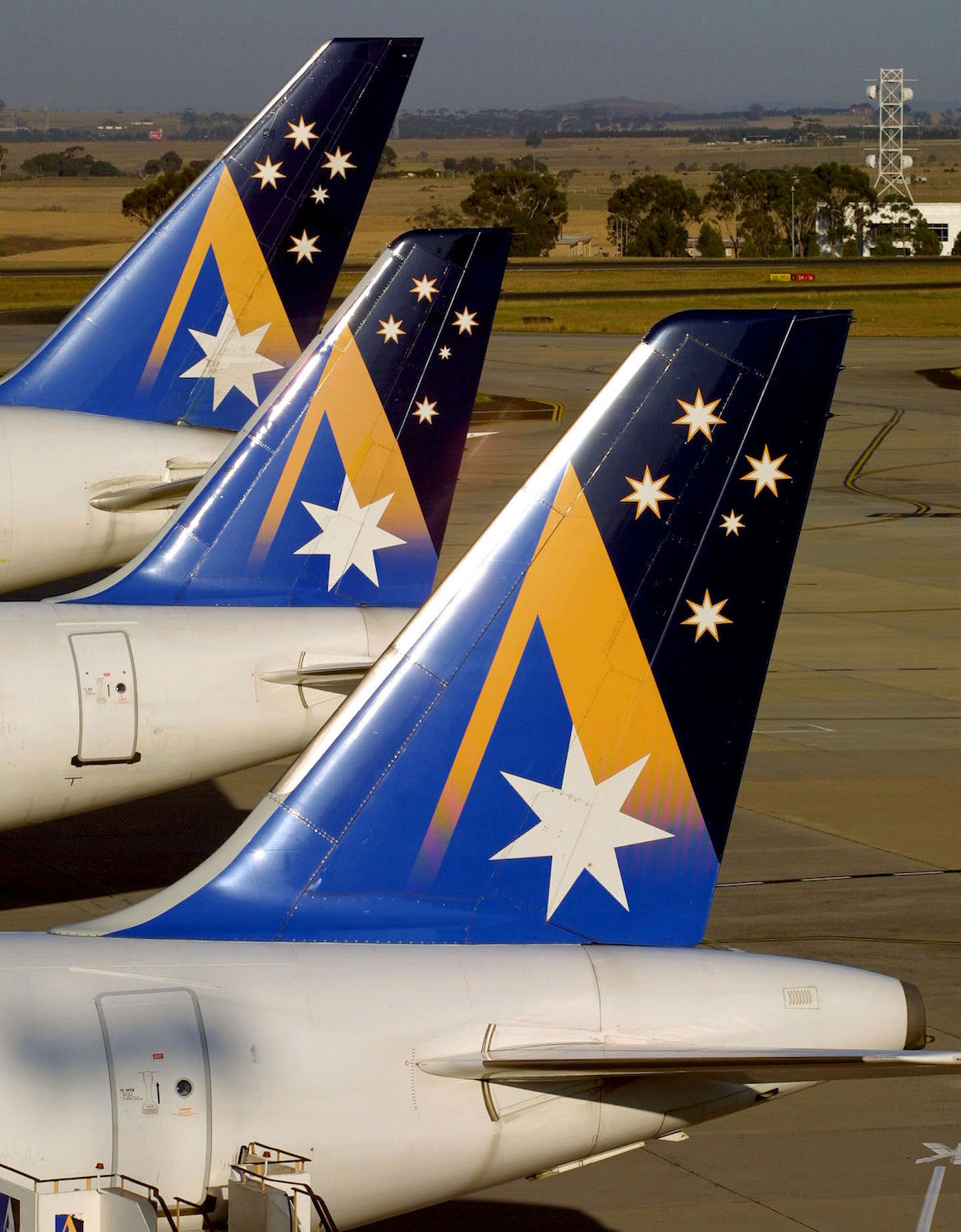
Turbulence
Problems began almost immediately. Eddington left for British Airways, McCrea was dumped, allegedly at the insistence of SIA along with 13 Ansett executives, and S&P downgraded its rating on Air New Zealand. It was to be downgraded three more times in the next year.
With McCrea’s departure, Air New Zealand chairman Selwyn Cushing, an accountant and friend of Brierley founder Sir Ron Brierley, took up the chief executive position. Bill Forrest, former legal adviser to Ansett, summed up that situation in the Australian Financial Review: “Cushing did not have the first clue on how to run an airline.”
While the management upheavals were rocking Ansett and Air New Zealand, Richard Branson’s Virgin Blue and Impulse Airlines started flights with a cost structure half that of Ansett’s. Greg Ward, an airline analyst with Credit Suisse First Boston in Melbourne, added at the time that “the Australian government allowed a foreign-owned airline to fly on Australia’s domestic routes when it knew the incumbents were not ready”.
After all, Ansett barely had survived its encounter with the late Bryan Grey’s low-fare startup Compass Airlines in 1991, with a former Ansett executive saying that the airline was only a “few weeks away from going bankrupt” when Compass fell over. Despite that narrow escape, the airline’s unions were not flexible on productivity tradeoffs that might have made Ansett more competitive. A decade later, it was more vulnerable.
As Virgin Blue and Impulse were tearing at the heart of Ansett in the second half of 2000, it would have been logical to assume that Air New Zealand would seek to safeguard its enormous investment with more capital. But Air New Zealand had its own problems, as Brierley was unwilling and allegedly at the time unable to provide any funding and SIA, having been outmanoeuvred by Brierley once already, was not going to sign any blank cheques. If it was to be the banker, it wanted a bigger share in Air New Zealand and even its own piece of Ansett.
Then it ran into another roadblock as under New Zealand law, SIA as a foreign airline was limited to holding no more than 25 per cent of the airline. Initial efforts to involve the New Zealand government fell afoul of local politics. The coalition government of Prime Minister Helen Clark was not eager to take up the issue, particularly given that Cushing was the major fundraiser for the main opposition party. “She wasn’t going to be doing Brierley any favours,” said one observer at the time. “Brierley and Cushing represented everything that Clark hated about big business.” It also was not clear that the government recognised the severity of the growing crisis, which hit with the force of a tsunami.
Mounting losses
In November 2000, this author broke the news that Ansett was losing money and forced Air New Zealand to concede that fact to the stock exchange. The next month Cushing finally appointed a chief executive, former Qantas deputy chief executive Gary Toomey, to run the combined Air New Zealand-Ansett group. This was against the wishes of SIA. By now, however, Ansett was nearing its endgame. A series of operational and maintenance breakdowns beginning over the Christmas holiday that led to the forced grounding of nine 767s severely damaged public confidence.
Toomey hit the ground running in January of 2001. His first task was to shore up Ansett’s few remaining significant corporate accounts, which were about to walk to Qantas.
Just three months later at Easter, the 767s were grounded again over yet another service bulletin oversight. The Civil Aviation Safety Authority (CASA) kept them down for weeks as reports from Ansett’s pilots, which were made public through this author, told of an airline in utter disarray.
In May, Impulse Airlines, which was losing $500,000 a week, collapsed into the arms of a very willing Qantas, while SIA made yet another bid to get the New Zealand government to embrace a lift in its ANZ ownership – to no avail.
Next Qantas entered the battle, making a dramatic bid for SIA’s stake in Air New Zealand with Ansett to be sold off to the Singapore-based carrier. Its motivation was to create two equal blocks, Qantas/Air New Zealand and SIA/Ansett. By now, however, SIA was not as eager to take a piece of Ansett. Instead it again offered to increase its stake in Air New Zealand and underwrite additional capital-raising so the parent could fund badly needed aircraft for Ansett.
Deep throat
By June Ansett was haemorrhaging $18 million a week, its yield had dropped 16 per cent, and a loss of $400 million for the year to June 30 was tipped – and a “deep throat” in the Ansett executive team was leaking critical information to this author.
Starting in July every Monday morning, this author received an email from [email protected] labelled Toomeyland. The emails revealed a host of damning sensitive financial data, that if published in its entirety would have seen the airline collapse immediately because of the effect on the public’s confidence.
The emails were scathing of Toomey’s leadership and disparaging about most of the Qantas executives who had followed him to Air New Zealand. They told of a disjointed board, a grim tale of a loss for the following year of $700 million for Ansett, with plans for massive staff and route cuts.
In July Qantas was negotiating directly with the Air New Zealand board and Brierley, and Cushing stepped down because of the conflict of interest. But the board, under acting chairman Jim Farmer, endorsed the SIA proposal, covered by an MoU and subject to due diligence on Ansett’s health.
Weeks of procrastination and back room dealing followed, as the Australian government pushed the Qantas line and a divided New Zealand government was unsure of what course of action to follow. The Air New Zealand board also was divided, and all this time the airline’s shares were being devastated.
Not surprisingly to many, ANZ-Ansett management’s entire recovery strategy for Ansett was based on buying out Virgin Blue and for it to take over 40 per cent of Ansett’s routes. Virgin’s Branson had indicated tacit agreement on the deal, but changed his mind once the parlous state of Ansett’s finances was public.
Critically, SIA’s Cheong apparently felt that Branson was asking too much and suggested he could negotiate a better deal, thus delaying the deal which was underway in May. In a twist, Branson previously had sold 49 per cent of his flagship airline, Virgin Atlantic, to SIA in 2000 for a price well above its value and Cheong didn’t want to get stung again.
Within hours of Branson’s rejecting the ANZ offer by publicly tearing up a fake cheque for $125 million, Farmer had Ansett up for sale to Qantas for just $1! With Virgin Blue staying in the market, Ansett was finished and bankrupt. SIA already had rejected the same offer and a week earlier had backed off the recapitalisation of ANZ, fearing it would be dragged down as ANZ had to face writing off its Ansett stake.
At the time the Air New Zealand and Ansett staff were going through agony. According to former Air New Zealand GM international airline Ed Sims it was “gut wrenching”.
Sims had joined Ansett under an Air New Zealand contract from Air Tours in the UK three months before the collapse as VP retail, looking after 800 Traveland outlets.
“It was bizarre, surreal, dark and unnerving,” Sims recalled. “The agencies had been either starved of information or cash or both. I had to make these businesses viable and at the same time look at what value could be extracted. I had a split personality. It was just terrible. The people were passionate and 98 per cent were not responsible for what happened.”
Sims recalls an exco meeting at Crown Casino in Melbourne and said the “atmosphere was poisonous” and you “could cut the air with a knife.”
“Some outsider consultants came in to give us a PowerPoint and if you are a lover of PowerPoints it was superb, but it had no relevance to the business. I knew what she was telling us was utter rubbish,” Sims recalled.
“We were leading a double life for over two months. It was really tough, really tough. Management kept telling us there was hope, we wanted to believe it but we had profound misgivings.
“When the call came at 3.30 in the morning that Ansett had collapsed, it was almost a relief as there was an incredible sense of clarity. If it had survived there would have been massive attrition. Receivership took that painful decision away.”
VIDEO: Ansett Australia’s “Absolutely” advertisement featuring a number of well-known Australians that aired in 2001 from the Classic TV Ads YouTube channel.
Savage and swift
On September 12 Air New Zealand abandoned Ansett and its 16,000 staff, placed the airline in administration, and announced a recapitalisation plan to restore some health to its ravaged balance sheet. Two days later Ansett was grounded. The shutdown was a disaster for Australia as a host of regional centres were cut off and tourism devastated.
The New Zealand government agreed on October 4 to inject NZ$885 million and renationalise the carrier after a rescue package involving SIA and Brierley fell over. Toomey resigned a few days later.
Analysts, commentators and some politicians in both countries called for a total policy rethink that recognised the special political, economic, strategic and social needs that have become attached to a national airline.
“It’s time to recognise that this is a failure of government strategy and one with potentially deep economic and social implications,” said Peter Harbison, founder of the Centre for Asia Pacific Aviation, at the time.
Standard and Poor’s Ward agreed. “For a country the size of Australia particularly, the need for a workably competitive domestic airline system is overpowering,” she told this author. “It provides a fundamental social and communications role. It is also the basis of tourism and business evolution.”
Harbison called for countries such as Australia and New Zealand to address in a bipartisan way what precisely they wanted from their airline industry, and then establish a clear strategy to achieve it. He added that removing national ownership controls if required, and exemptions from competition laws relating to mergers, should be embraced.
The loss for Air New Zealand was NZ$1.425 billion, the largest in New Zealand history. What then followed was an ill-informed Australian backlash against anything New Zealand, including Prime Minister Helen Clark’s 727 aircraft which was blockaded in Melbourne.
Farcical accusations flowed that Air New Zealand had stripped Ansett of its cash, charged fuel used by Air New Zealand aircraft to Ansett’s account, and removed engines from Ansett aircraft.
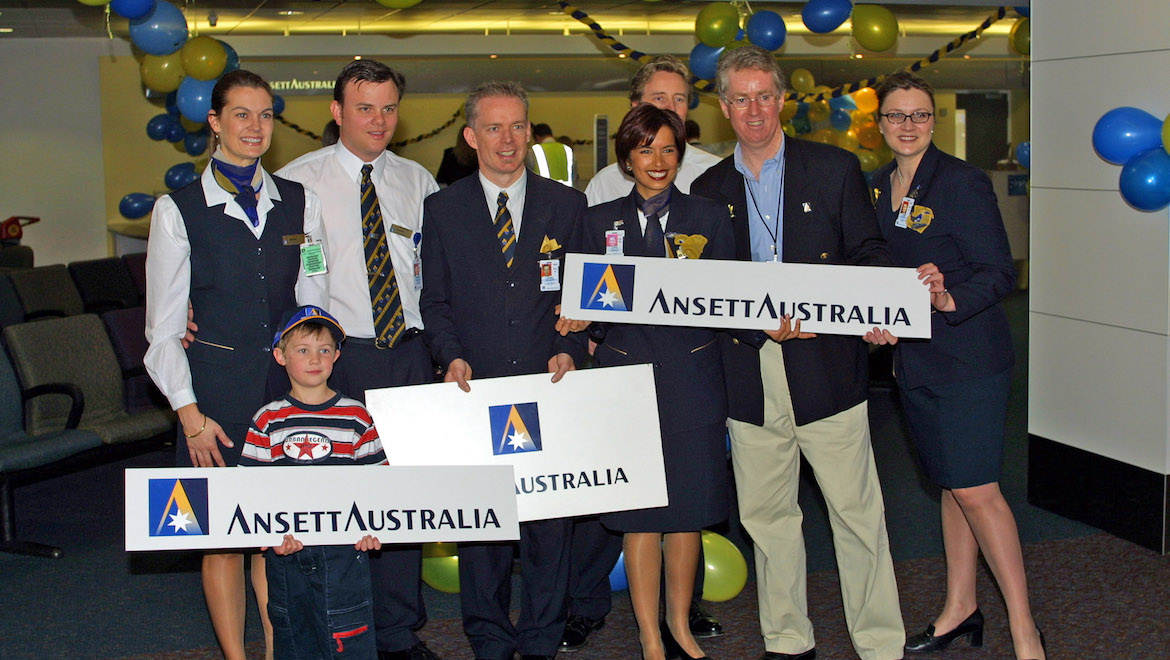
Death throws
On September 14 2001, Ansett Australia Administrator Peter Hodge of PricewaterhouseCoopers suspended all flight operations of Ansett Australia, Ansett International, Hazelton Airlines, Kendell Airlines, Skywest Airlines and Aeropelican, and the next day the government announced a $10 ticket levy to support staff entitlements.
However, within a couple of days Hodge stood down after unions accused PricewaterhouseCoopers of a conflict of interest. Mark Korda and Mark Mentha of Arthur Andersen were appointed administrators of the Ansett group of companies. Debt was put as high as $2 billion. (Later, Korda and Mentha would form their own company, when Arthur Anderson’s global businesses were sold off.)
Within a few weeks Skywest, Kendell and Aeropelican were back in the air with some government assistance, and on September 27 the administrators announced that five Ansett A320s would start flying again with the support of 1,500 staff.
That glimmer of hope gained some momentum in October with talks with Singapore Airlines about its involvement in Ansett Mark II. By October 17, over 100,000 passengers had booked seats on Ansett’s five A320s flying major trunk routes.
Then on November 8 the Ansett administrators reached an agreement with the Solomon Lew–Lindsay Fox consortium, Tesna Holdings Ltd, to acquire Ansett’s mainline operation and other assets in a deal valued at $3.6 billion. By January 1 Tesna had appointed James Hogan, now chief executive of Etihad Airways, as chief executive, and Adam Moroney as chief financial officer.
Despite announcing a deal to buy 30 A320s from Airbus in early February and confirming that Ansett would rejoin Star Alliance on February 25, the deal to relaunch Ansett collapsed the following day. Without any prior warning, the administrators announced on February 27 – just days before the new Ansett was due to launch – that Fox and Lew had withdrawn their bid, citing “inability to complete the transaction on legal advice”. A subsequent press conference with Fox and Lew the same day announced that they had received no support from the government for their bid, and thus were withdrawing their proposal.
On March 4 2002 Ansett flew its last service, AN152, from Perth to Sydney, operated by A320-211 VH-HYI, and it touched down on March 5 just after 6am – after 66 years.
VIDEO: A news report on Ansett’s last flight from the Channel 10 YouTube channel.
Board problems
Reflecting on the demise of Ansett, current Air New Zealand chairman John Palmer says there were significant problems with the board at Air New Zealand at the time. “Its performance at best was sub-optimal and sometimes totally dysfunctional.”
Palmer argues that with the takeover of Ansett “the strategic imperative plan was absolutely right but as in a number of businesses, if the ability to manage the deal gets in front of the strategic imperative and you don’t tightly manage that process as you go along, you must ask: Can we still do this?”
Former board member and chief executive after the restructure in 2001 Ralph Norris put some perspective on the issues at play in a 2010 interview.
“I arrived in late 1998 and the board was already committed to getting the second 50 per cent of Ansett. I remember asking questions about whether the airline could execute the deal, and that is why I stayed on after the collapse of Ansett because I asked those questions.”
Norris says that the answers he was given were positive and the other board members were confident. However, the only person who could do the deal was then Air New Zealand chief executive Jim McCrea, who was dumped at the insistence of Singapore Airlines, claims Norris.
“When Jim left the dynamics changed and the whole thing became a bugger’s muddle.”
“You had Brierley, Singapore Airlines, Ansett, two governments, News Corp and Qantas. Geoff Dixon played his cards very, very well,” Norris noted. “It was never going to be an easy outcome and people underestimated the dynamics and the different agendas of the different parties.”
Norris says that Ansett was “abysmally run for a number of years. The maintenance problems that manifested themselves in the groundings of the 767s at Christmas 2000 and the following Easter came about as Air New Zealand integrated its maintenance systems and it found the errors at Ansett.”
“Parts were being used up to the 110 per cent maintenance buffer and thus aircraft were grounded.”
Norris also points out that if Singapore Airlines hadn’t interfered with the deal to buy Virgin Blue off Branson in May, the outcome would have been very different.
“Around August, Singapore Airlines verbally committed to the board to recapitalise Ansett through Air New Zealand. Price was agreed and then negotiated down, but they didn’t go through and Ansett was finished.”
According to Norris, there was agreement from the New Zealand government that they could increase shares in Air New Zealand to do the deal.
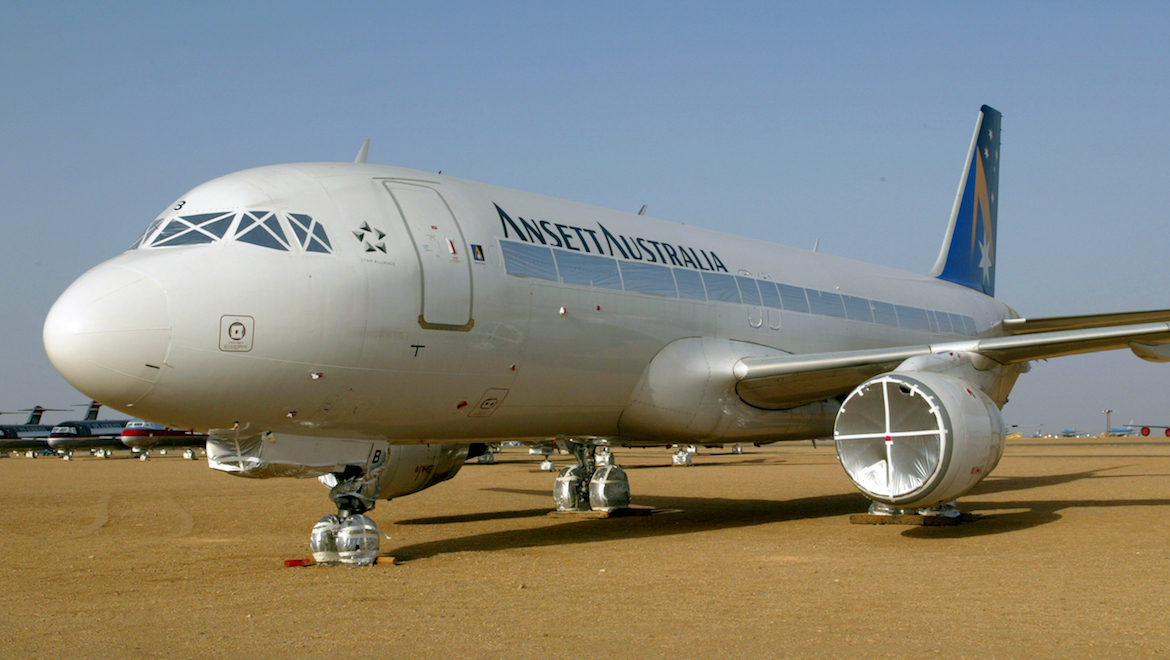
In April 2002 the New Zealand government released papers related to the collapse, and according to Dow Jones then Finance Minister Michael Cullen said he believed that Air New Zealand did not realise how bad a financial situation it was in until it was too late to solve the problem. While much of the material released simply confirmed what was widely known about the saga, it underlined that Air New Zealand failed to warn the government about how close its Australian subsidiary Ansett was to collapse until its bid to buy Virgin Blue evaporated.
However Dr Cullen said at the time that he did not believe Air New Zealand covered up how much Ansett was dragging down the company.
“I think Air New Zealand didn’t realise how bad the situation was. There was a fundamentally underlying problem that they determined upon a plan A and were not able to get their heads around the fact that plan was unravelling on them.”
Dr Cullen told Dow Jones that the government had acted as quickly as possible when information and proposals became available.
Dow Jones added that the papers showed that Air New Zealand did not know or did not realise how bad its financial outlook was when it first approached the government for assistance on March 19 2001.
The first letter from Toomey to New Zealand Prime Minister Helen Clark warned that Air New Zealand would not be able to expand if the restrictions on foreign ownership were not eased.
According to Dow Jones, the papers showed that government officials were dubious about lifting the ownership restrictions because of agreements with other countries and concern about rumours over the financial state of Ansett.
However, according to this author’s deep throat informant the Ansett executive and board of Air New Zealand were told that if Branson would sell Virgin Blue to Ansett it would have without doubt solved all the problems. It was only Singapore Airlines’ insistence on haggling on the price, not wanting to pay too much for the airline as they had already done with Virgin Atlantic, that scuttled the deal.
Branson agreed to sell in May, but as the months went by arguing over the price Ansett’s dire state became better known, and Branson saw the advantages of not selling and tore up the fake cheque.
The Australian Securities and Investment Commission (ASIC) began an investigation into whether Ansett had gone on trading while insolvent, and eventually determined in July 2002 that it would be too expensive and difficult to proceed with an action which would, in any case, need to be many separate actions on behalf of individual creditors rather than just one.
Ansett’s unsecured creditors who were owed over $3 billion received nothing.
Separately ASIC dropped its inquiry into any Air New Zealand role after a comprehensive package was agreed whereby the airline put in $150 million for Ansett staff entitlements and withdrew its own $160 million claim on Ansett, while the crippled Australian airline would not have to repay a $32 million advance on wages. The funding for this agreement came from the New Zealand government which loaned Air New Zealand NZ$300 million and took $585 million in equity, securing an 83 per cent stake in the airline.
In a speech to the Australian Airports Association Airports & Aviation Outlook titled What Really Went Wrong at Ansett delivered in Adelaide in November 2002, Tom Ballantyne, chief correspondent with Orient Aviation cited an address by Norris, by then chief executive of Air New Zealand, to a corporate governance summit that a year earlier Air New Zealand was “well and truly wandering in the wilderness”, and a “strategy that had been guiding the company’s development for the best part of a decade was in ruins”.
Ballantyne said that Norris argued Air New Zealand had “exhausted every opportunity at our disposal to keep Ansett flying, to keep our dream alive – of operating the first comprehensive Australasian network of airlines”.
Norris noted that Air New Zealand’s management and board had been subjected to “an extremely high degree of official scrutiny – on both sides of the Tasman – both before and after the Ansett collapse”.
“In all the investigations, no-one has been able to demonstrate a breach of duty on the part of the directors or executives in regard to the collapse of Ansett,” Norris said.
Norris told his audience that the Ansett administrators found no evidence of directors obtaining personal benefit, or of recklessness in their considerations, while there was no evidence of asset stripping, no evidence of claims of inappropriate payment of expenses, or unfair preference payments to creditors, prior to the appointment of the administrators.
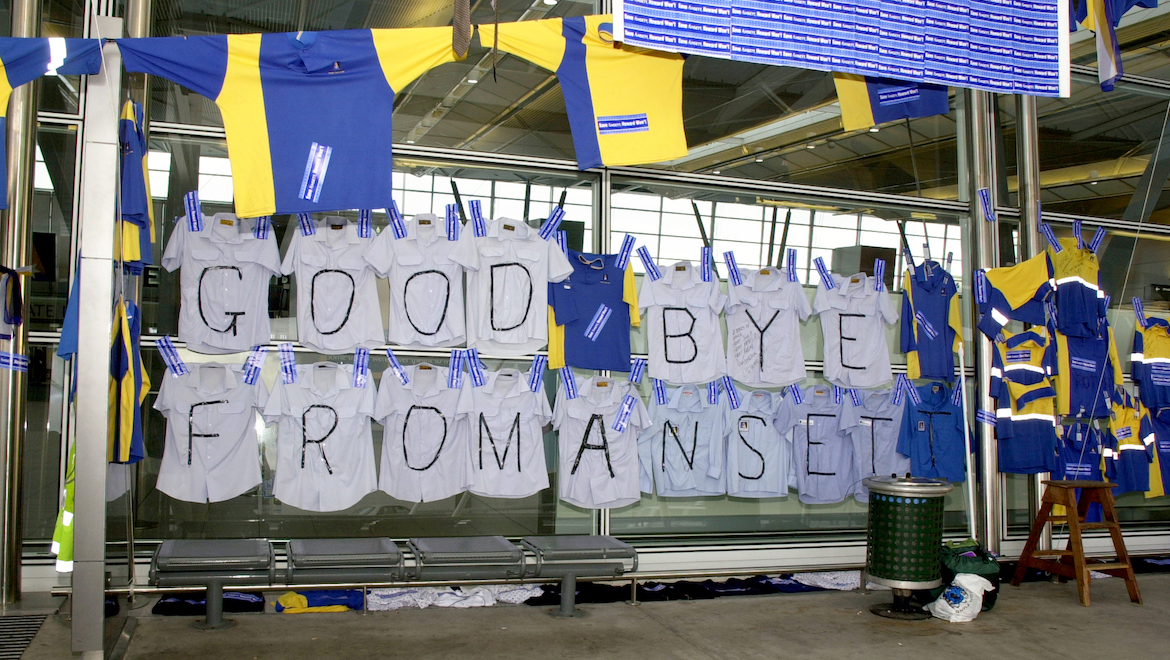
Perspectives and payouts
Debate will rage for years to come over the responsibility for the demise of Ansett, but possibly the simplest explanation was offered in 2004 by then Virgin Blue chief executive Brett Godfrey when he told media that his airline in that financial year would carry more passengers – 10.6 million – than Ansett’s 10.1 million in its last full year on major truck routes, with only one third the staff.
In 2004 Virgin Blue employed 3,300 staff, against Ansett’s 10,000 for its domestic trunk route division, while a total of 16,000 staff were on the payroll when the regional and international airlines were included. What’s more, the Virgin staff were paid on average 50 per cent less than Ansett’s.
The fleet productivity of Virgin was also way higher. In 2004 the airline had almost 40 737NGs, while Ansett’s mainline fleet in 2001 was made up of 52 767s, 737s and A320s.
Those staff numbers and fleet productivity underscored Ansett’s cost per available seat kilometre (CASK) of $0.16 in 2001, which looked sick against Virgin’s 2001 figure of $0.08 CASK. Qantas’s ASK cost figure was $0.12, but it commanded the business class market.
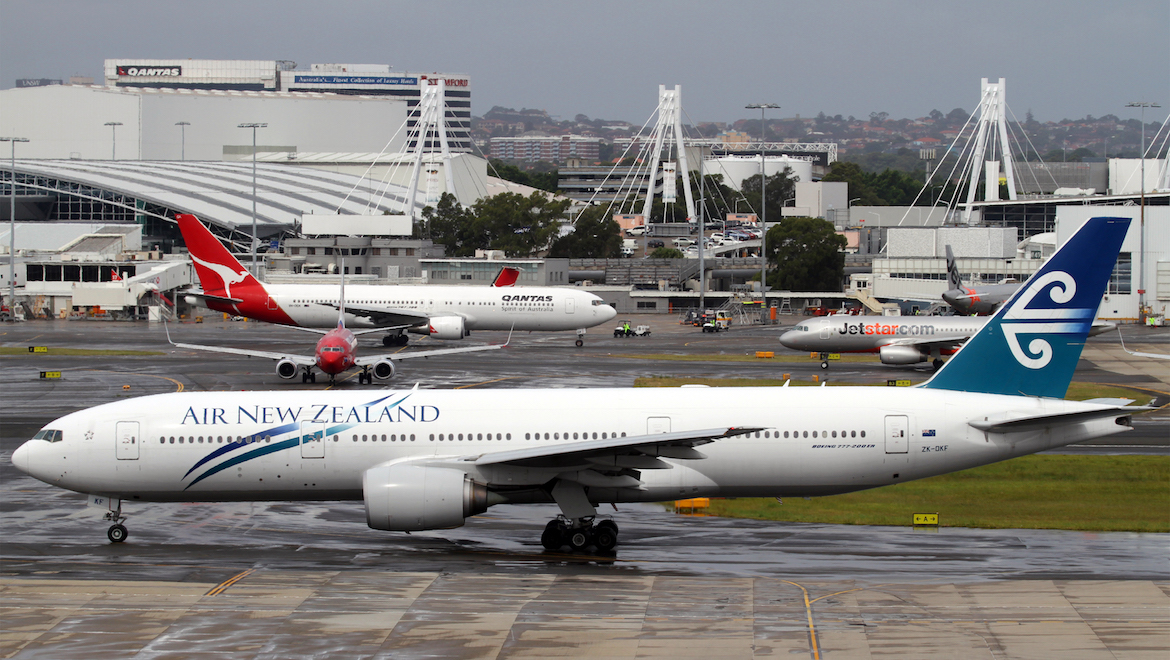
Part of that productivity gap can also be blamed on the the conduct of many of Ansett’s unions over the years.
Ballantyne, one of Australia’s most respected aviation commentators, said in his speech that “unions must bear a substantial amount of the blame for Ansett’s troubles”.
He added: “The union movement should hang its head in shame at the years of short-sighted money-grabbing that played as big a role in Ansett’s death, as did the repeated negligence of various owners to the management needs of the airline. It’s ironic that both owners and unions essentially saw Ansett as a cash cow and that owners, just as criminally, mostly gave in to union demands.”
Ballantyne cited the infamous three-man 767 cockpits as one example where the engineer “was totally superfluous”. Another example according to Ballantyne were the TWU ramp workers who had “a guaranteed overtime component of over 10 hours per man per week”.
“In essence, union pig-headedness, coupled with board reluctance to confront the issue, was gradually bleeding Ansett dry, destroying any hope it may have had of properly competing with a major rival that had streaked ahead in terms of business sanity and fine-tuning of its economic baseline.”
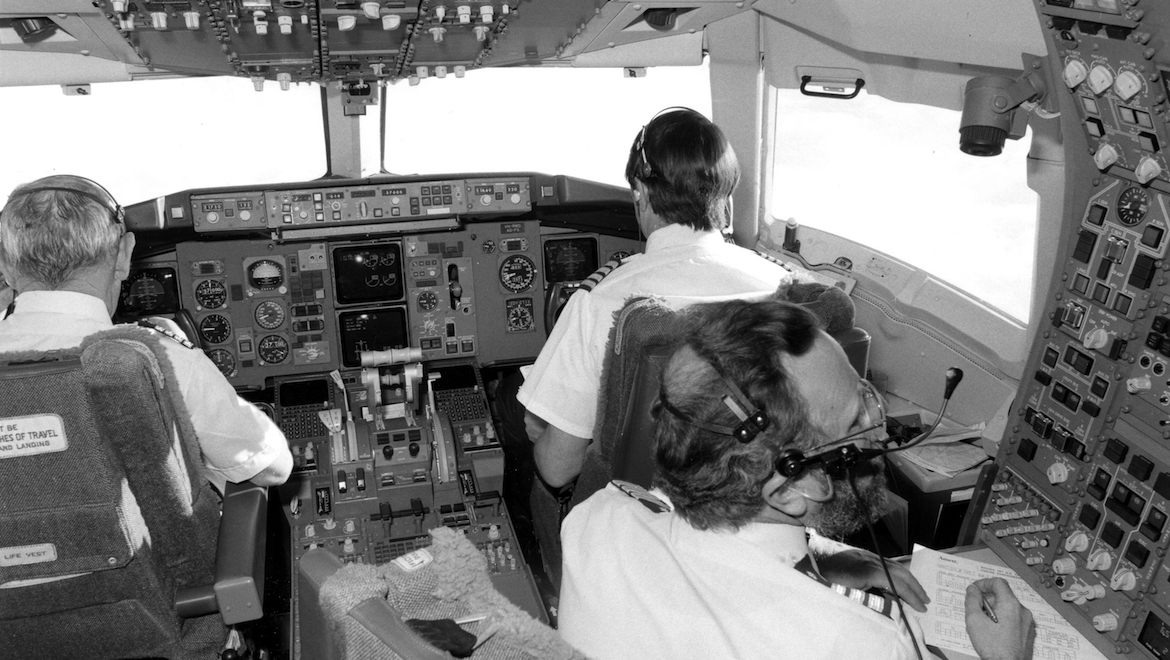
The salary levels at Ansett were put into context by a report The post-retrenchment labour market experiences of Ansett workers (Webber et al) conducted by the University of Melbourne for the Victorian Government in 2002.
It noted that “Ansett workers enjoyed high incomes compared to national average wages: baggage handlers, for example, earned more than Level A university lecturers”.
The report found that the median take-home annual incomes at Ansett in 2001 were $74,000 for managers, $62,000 for trades and technicians, $56,000 for cabin crew, $45,000 for customer service workers and $52,000 for service operators. Pilots on average took home well over $100,000.
Webber et al noted that many workers had believed Ansett would nurture and protect them through their working lives. “For better or worse, it is reasonable to conclude that Ansett workers’ perceptions of the benefits that employers provide their workforce were becoming increasingly out of step with the conditions of employment in the ‘flexible’ workplaces of discount airlines and in many firms in other industries.”
The report also found that so cocooned were the staff that just before September 12 2001, 79 per cent considered their job secure and only 10 per cent perceived any danger to their ongoing employment. “Not surprisingly, the first reactions to the events of September 12 2001 were shock and disbelief.”
Over the next 10 years Korda Mentha worked a miracle, and as this is read will have paid $723.1 million of the $758.0 million total employee entitlements owed, which is approximately 95.4 cents in the dollar, while the Commonwealth Government has received $60.2 million of its total advance of $382.4 million.
While that result is outstanding it did not help the 30 Ansett employees who committed suicide, nor thousands of staff who could not find another job quickly and were forced to borrow from friends and relatives and who are still struggling with repayments.
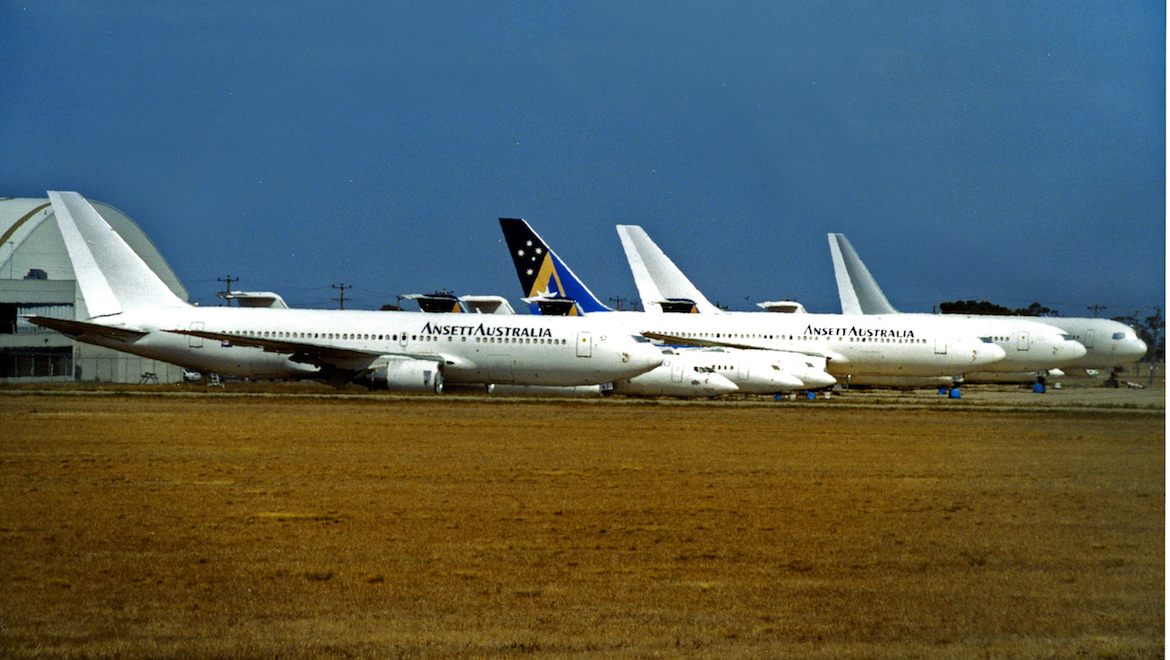
Postscript
If any airline learned anything from the Ansett fiasco it was Air New Zealand. From being a train wreck in late 2001 it has gone on to blitz the airline world by inspiring its staff.
Last year it won 26 international awards for its innovation and service and it has not only reinvented itself, but economy and premium economy classes as well.
At every touch point it is a world leader, with staff motivated by arguably the world’s best airline management team under chief executive Rob Fyfe, who not only walks the walk but first builds the path to walk on with his own hands.
Last year 27,000 New Zealanders applied for a job with the airline and it is the most admired company in the country.
At least it has avoided the fate of the Ansett tragedy.
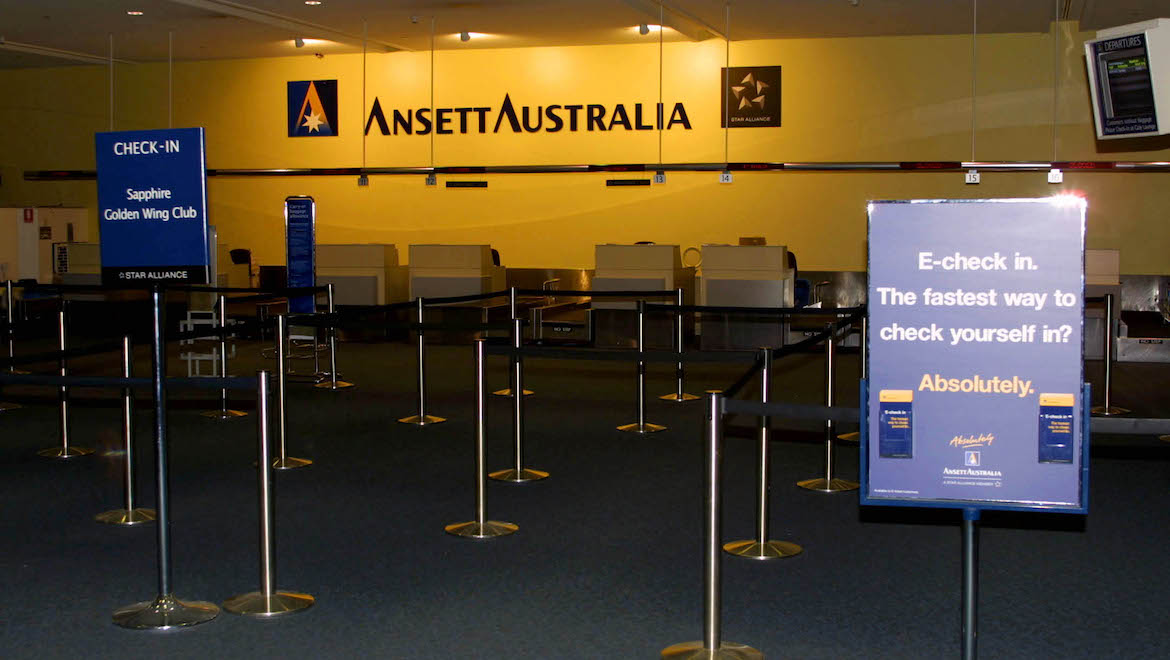
This story first appeared in the September 2011 edition of Australian Aviation. To read more stories like this, subscribe here.
In Australia, Lifeline (lifeline.org.au) offers a 24-hour crisis support and suicide prevention telephone service on 13 11 14. People battling depression and anxiety can also call Beyondblue (beyondblue.org.au) on 1300 224 636.










